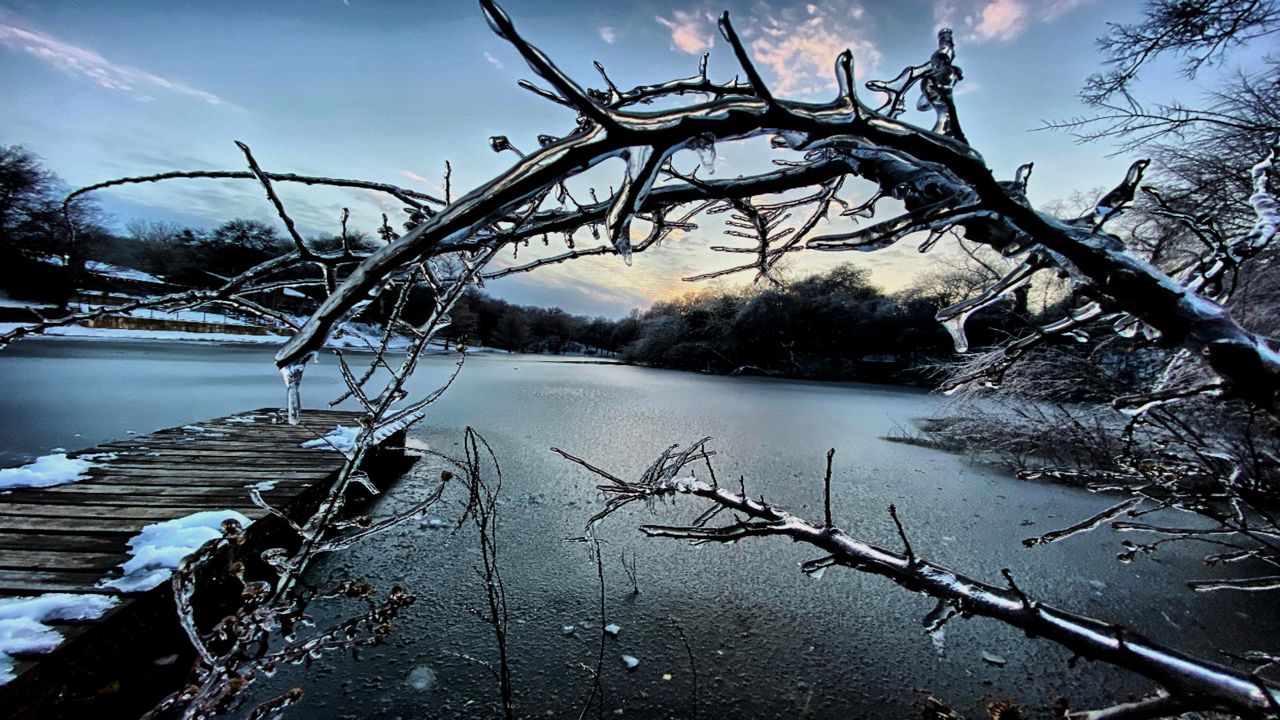What is freezing rain?
It’s a question that seems to create some confusion. I’ve heard many times over the years people say in response to a question about what the weather is like outside with, “oh, it’s just raining.”
In fact, what they experienced was freezing rain.
Here’s a working definition of freezing rain: Liquid rain that freezes relatively soon after making contact with a surface with a temperature at or below freezing. That’s 32 degrees Fahrenheit and 0 degrees Celsius.
The confusion is because some believe sleet (actual ice pellets) is freezing rain. Sleet is related to freezing rain and can occur in an alternating pattern during a prolonged icing event, but it is not freezing rain.
During a prolonged period of freezing rain, you’ll notice ice building up initially on elevated surfaces such as tree branches or power lines. These surfaces are often colder than the ground or car tops, patio furniture, and such.
It tends to take a bit longer for ice to build on the pavement. One reason can be due to a relative difference in warmth. Another reason is due to a process called latent heat release.
Liquid raindrops can vary in temperature and size. The larger and warmer the drops, the slower the process is to freeze on below-freezing surfaces.
These larger and warmer drops will release the heat in them when they freeze, which can be just enough to warm the surface they land on. That, in turn, slows ice buildup on those surfaces.
Supercooled water droplets falling from clouds will freeze much quicker because the temperature of these liquid droplets is already below freezing. They just need to make contact with a surface to initiate the freezing process.
Often what you may notice during a prolonged freezing rain event is how sneaky the ice buildup on the pavement is because the pavement will look wet and may even have some water on it, but ice is slowly building up under the thin layer of water.
Ice buildup of around a tenth of an inch will create very slippery pavement. When that buildup gets close to half an inch, then we can run into problems such as tree damage and power outages.
Ice buildup puts extra weight on tree branches and power lines that can cause them to break – especially if gusty winds are occurring at the same time.
Here’s how freezing rain occurs: A combination of snow and supercooled water droplets will fall from clouds. If there is a layer of air with above freezing temperatures around a thousand feet in depth, snowflakes will melt and turn into raindrops.
If these raindrops and supercooled water droplets fall into a shallow layer of air at and just above the surface of the earth, they will freeze relatively soon after making contact with a surface that has a temperature at or below freezing.
The red squiggly line is the air temperature, and the blue line is the dew point temperature measured from the surface of the earth (near the bottom of the graph) up above 25,000 feet at the top. The air temperature is below freezing until about 700 millibars then it goes above freezing from 700 down to about 925 millibars.
That's roughly from around 10,000 feet down to about 2500 feet.
Snowflakes turn to liquid raindrops as they fall through this layer before encountering a shallow layer of below-freezing air just before making contact with surfaces on earth.
For sleet to occur, those raindrops will freeze into ice pellets before reaching the surface of the earth. They can sting too when hitting exposed skin, such as on the face.
Hopefully, you now know the difference between freezing rain and sleet and will be prepared for the next icy event.



